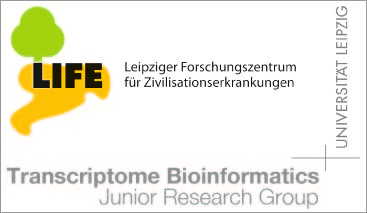Publications - Published papers
Please find below publications of our group. Currently, we list 565 papers. Some of the publications are in collaboration with the group of Sonja Prohaska and are also listed in the publication list for her individual group. Access to published papers ( ) is restricted to our local network and chosen collaborators.
If you have problems accessing electronic information, please let us know:
) is restricted to our local network and chosen collaborators.
If you have problems accessing electronic information, please let us know:
 ) is restricted to our local network and chosen collaborators.
If you have problems accessing electronic information, please let us know:
) is restricted to our local network and chosen collaborators.
If you have problems accessing electronic information, please let us know:©NOTICE: All papers are copyrighted by the authors; If you would like to use all or a portion of any paper, please contact the author.
Identification and Characterization of Novel Conserved RNA Structures in \emphDrosophila
Kirsch, Rebecca and Seemann, Stefan Ernst and Ruzzo, Walter Larry and Cohen, Stephen Michael and Stadler, Peter F. and Gorodkin, Jan
Download
Status: Published
BMC Genomics 19: 899
Abstract
Background
Comparative genomics approaches have facilitated the discovery of many novel non-coding and structured RNAs (ncRNAs). The increasing availability of related genomes now makes it possible to systematically search for compensatory base changes – and thus for conserved secondary structures – even in genomic regions that are poorly alignable in the primary sequence. The wealth of available transcriptome data can add valuable insight into expression and possible function for new ncRNA candidates. Earlier work identifying ncRNAs in Drosophila melanogaster made use of sequence-based alignments and employed a sliding window approach, inevitably biasing identification toward RNAs encoded in the more conserved parts of the genome.
Results
To search for conserved RNA structures (CRSs) that may not be highly conserved in sequence and to assess the expression of CRSs, we conducted a genome-wide structural alignment screen of 27 insect genomes including D. melanogaster and integrated this with an extensive set of tiling array data. The structural alignment screen revealed ∼30,000 novel candidate CRSs at an estimated false discovery rate of less than 10%. With more than one quarter of all individual CRS motifs showing sequence identities below 60%, the predicted CRSs largely complement the findings of sliding window approaches applied previously. While a sixth of the CRSs were ubiquitously expressed, we found that most were expressed in specific developmental stages or cell lines. Notably, most statistically significant enrichment of CRSs were observed in pupae, mainly in exons of untranslated regions, promotors, enhancers, and long ncRNAs. Interestingly, cell lines were found to express a different set of CRSs than were found in vivo. Only a small fraction of intergenic CRSs were co-expressed with the adjacent protein coding genes, which suggests that most intergenic CRSs are independent genetic units.
Conclusions
This study provides a more comprehensive view of the ncRNA transcriptome in fly as well as evidence for differential expression of CRSs during development and in cell lines.















